

|
Three Trash Traps of the
|
|
1. Based on the traditional "yana" fish weir of Japan, the first trap is designed to collect all trash pushed along in the current, not just items which float at the surface. This trap is installed along Nash Run, at the corner of Anacostia Ave NE and Douglas St NE, very near Kenilworth Aquatic Gardens. Small fish of the size found in Nash Run are able to pass between the bars. The current pushes trash items against the inclined bar grid, while the water passes beneath. The stronger the current, the higher the trash will be pushed up. In case of large volume of trash or high water, the trash will be pushed over the top of the trap and continue downstream without creating stream blockage. Nash Run is too small to carry large logs which might be capable of damaging the trap. This trap is one-of-a-kind, having been designed and built by the Anacostia Watershed Society at a cost of about $6000 in materials and 12 days of labor by three volunteers.
Nash Run has trash issues!
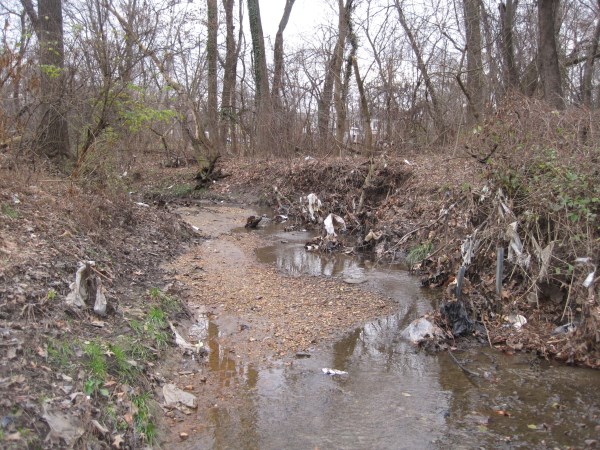
View of Nash Run trap after cleaning, looking downstream

Detail of construction
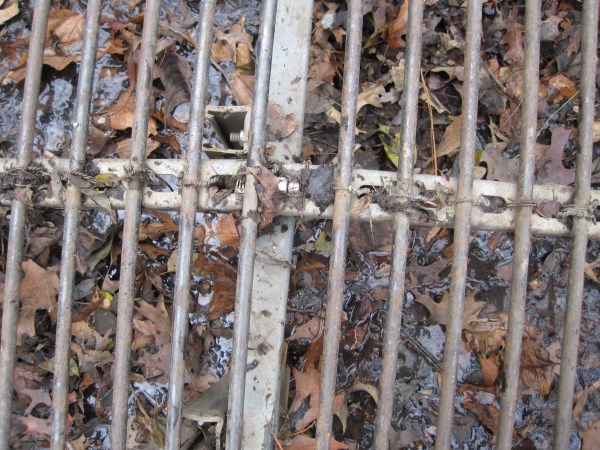
View of Nash Run trap looking upstream
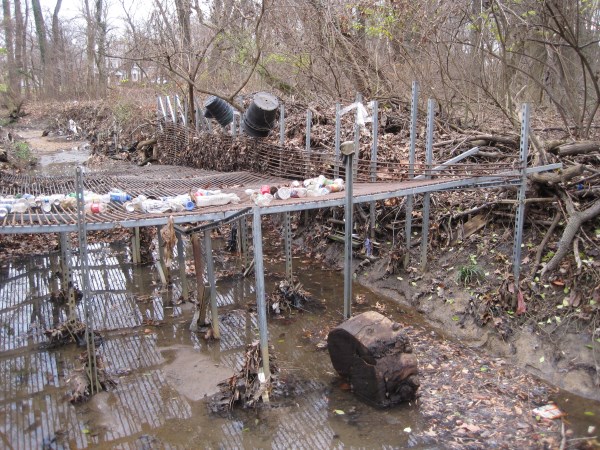
2. A second custom designed and built Anacostia Watershed Society trash trap is located in Riverside Terrace Park at Anacostia Ave NE & Clay St NE below a storm drain outfall in a tidal portion of the Anacostia River. This trap is designed to primarily capture floating trash items. A series of fences and two booms direct and skim the trash. The smaller boom is made of plastic bottles enclosed in tarp material. A small hole in the fence accommodates a preexisting beaver trail. Cost of this trap was about $3000 in materials.
The River Terrace Park trap, showing section of homemade plastic bottle boom
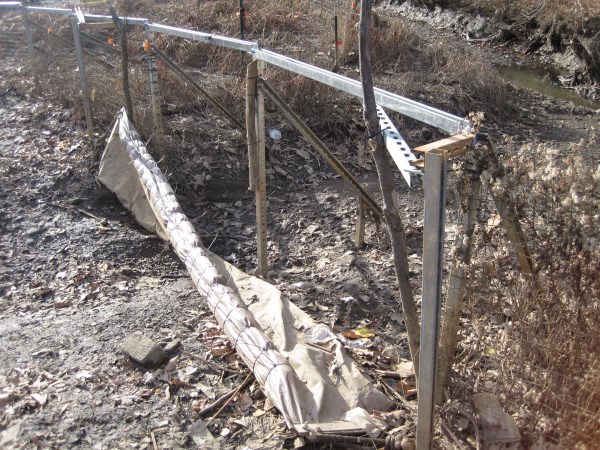
Detail of construction
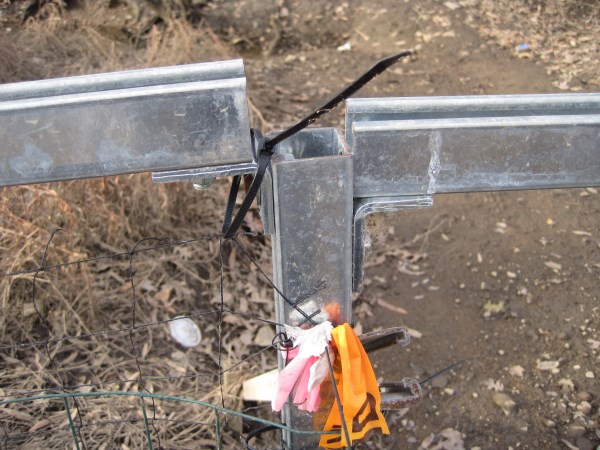
Outfall, commercial boom, and fence at River Terrace Park trap
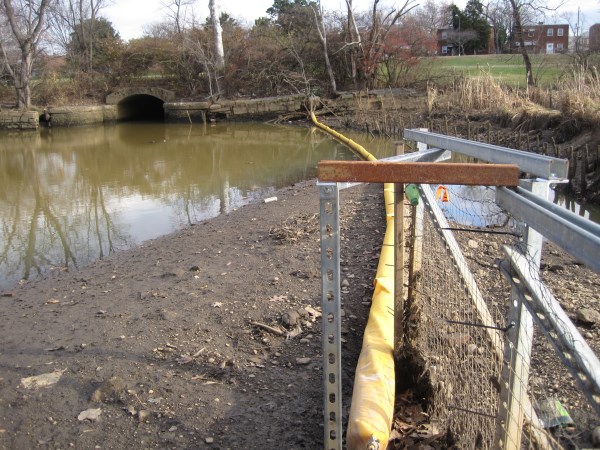
3. A third trap in the area is a professionally-installed commercial Bandalong floating boom installed near the mouth of Watts Branch in Kenilworth Park by the Anacostia Riverkeeper. This trap is designed to capture primarily floating trash items. The Bandalong is of heavy duty construction, designed to withstand substantial impact. Its sturdiness is shown by the photos of the log it has captured (which will likely be no fun to extract).
View of Watts Branch trap looking upstream
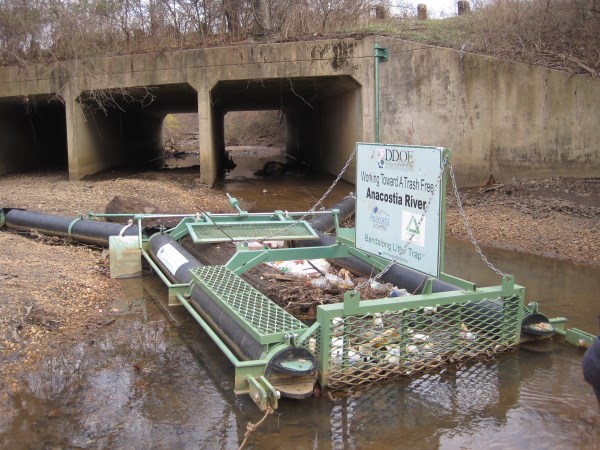
One-way rear gate keeps trash inside the trap.

Mostly floating debris is captured.

The Watts Branch trap is well anchored, yet can rise and fall with water levels.

Locations of the three traps
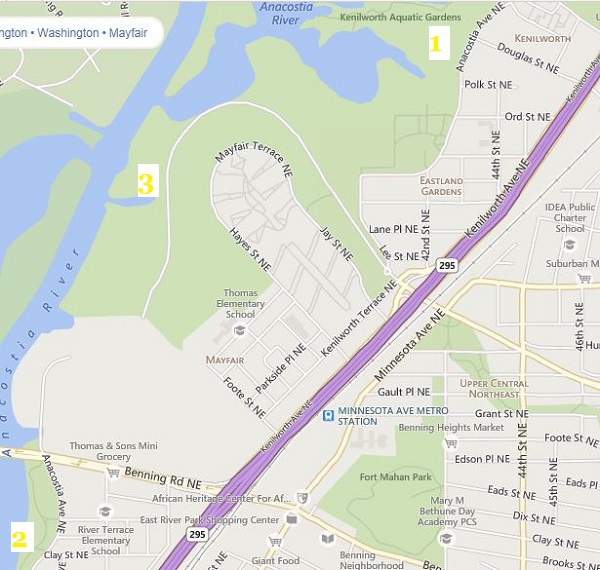
- December 19, 2014 | |